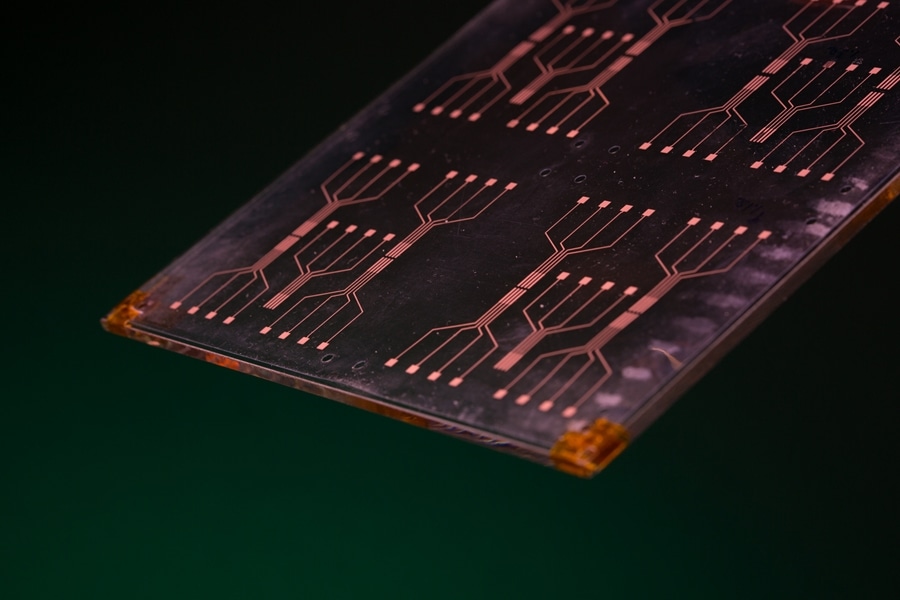Feb 14 2018
Imagine producing a material for the digital information highway that enables a fast lane of laser light, which zips data across the conventional silicon chips.
 Researchers are developing a new material that could improve the processing speed of sensors and other electronic components. (Image credit: University Relations)
Researchers are developing a new material that could improve the processing speed of sensors and other electronic components. (Image credit: University Relations)
Now, a multi-institutional team of researchers has made major enhancements to a novel kind of laser – a semiconducting device that can be injected with light, which is equivalent to injecting an electrical current. The study was headed by University of Arkansas engineering professor Shui-Qing “Fisher” Yu and a renowned Arkansas semiconductor equipment manufacturer.
Made of germanium tin grown on silicon substrates, the “optically pumped” laser could result in faster micro-processing speed at a relatively lower cost.
The latest findings have been reported in the journal of the American Chemical Society, ACS Photonics which showed that the most recent version of this type of laser can cover a broader wavelength range – from 2 to 3 micrometers, whilst employing a higher operation temperature – 180 Kelvin, or minus 135 Fahrenheit – and lower lasing threshold which means power consumption is less.
As a promising semiconducting material, the germanium alloy can be easily incorporated into electronic circuits, like those found in sensors and computer chips. The material could make it possible to develop compact, lightweight, low-cost, and low-power consuming electronic components that utilize light for sensing and information transmission.
Silicon, the traditional semiconductor for computer chips, cannot efficiently harness light. In contrast, germanium tin can do so efficiently. Over the past few years, engineers and materials scientists, including Yu and a number of his colleagues on this project, have concentrated on growing germanium tin on silicon substrates to construct an optoelectronics “superchip” that is capable of transmitting data much faster than present-day chips.
Yu and his co-workers reported the development of their first-generation, optically pumped laser in 2016. To do this, they first achieved a lasing operations temperature up to 110 Kelvin. The latest temperature attained by their laser is 180 Kelvin or minus 135 degrees Fahrenheit, the highest reported so far for a germanium tin laser.
Yu said that the broader wavelength range allows for possibly more capacity to transmit data. Higher operating temperatures and lower lasing thresholds means that there is less power consumption, which, in turn, reduces costs and aids with design simplicity. According to Yu, these enhancements suggest that the device is one step closer to practical applications.
Yu credited the excellent laser performance to exclusive epitaxial growth techniques that were developed by the scientists based on recently discovered techniques of growing the material. Epitaxy refers to the process of depositing wafers, or layers, of semiconducting materials onto a crystalline substrate.
“The results reported in this work show a major advance toward laser sources for integrated photonics,” Yu said.
Yu and his academic coworkers at the University of Arkansas at Pine Bluff, Dartmouth College in New Hampshire, Wilkes University in Pennsylvania, and the University of Massachusetts Boston partnered with Arktonics LLC, an Arkansas-based startup company which is a top semiconductor equipment manufacturer.
The Air Force Small Business Innovation Research program, the National Science Foundation, and the Air Force Office of Scientific Research supported the work.